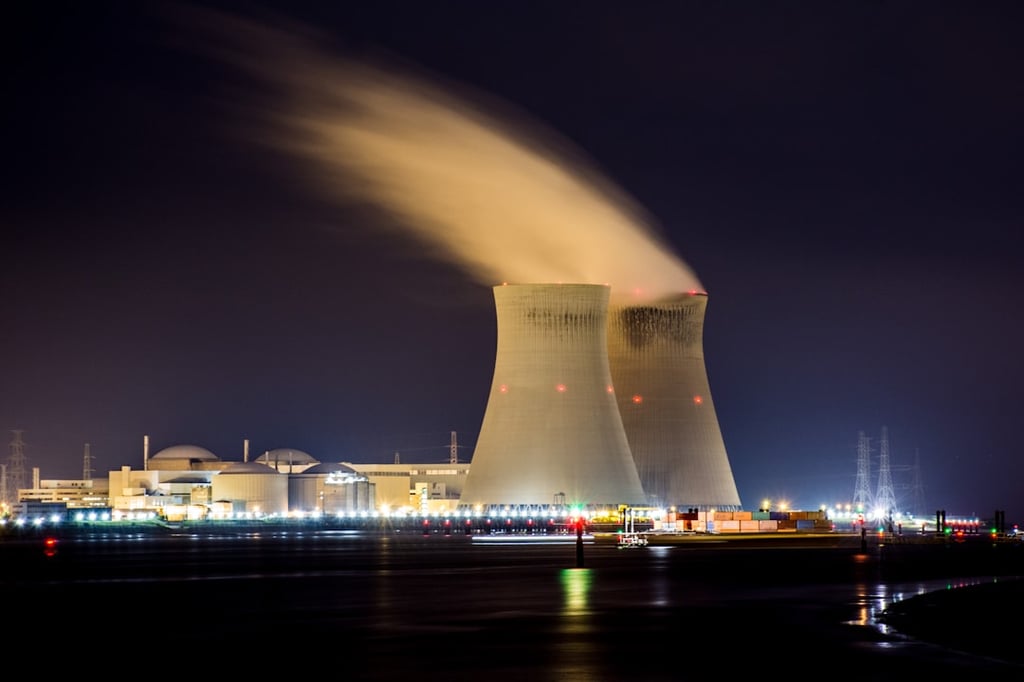Datamation content and product recommendations are
editorially independent. We may make money when you click on links
to our partners.
Learn More
It’s no surprise that the enterprise data center has a storage performance problem. Look at what the data center to contend with: raw sensor data, machine-generated data, financial transactions, big data analysis, hosted applications, R&D, mobile, social media, video, broadcasting – and that’s the short list.
Hard disk drive-laden SANs still top the storage food chain but even high-end arrays have issues around IO and latency.
Flash can remediate performance problems and many data center managers have already adopted it. Many more plan to within a 12-18 month timeframe.
The question is: are the managers choosing the best flash solution for their needs? Flash comes in many flavors. Just because it’s flash does not make it an automatic fix for your storage performance.
Flash Factors: What You Must Have
What do you look for? There are several different flash architectures to consider. Let’s look for first for the qualities that any flash installation must have.
· Flash storage needs to provide high IO processing speeds and low latency. These requirements are the point of flash but flash products differ dramatically in their performance levels.
· Flash arrays need to deliver consistent performance and media quality over time. Flash consistency can suffer as workloads grow and as flash media ages. Don’t just look at processing speeds in a pilot project; test it with production workloads. Also ask about wear leveling and non-disruptive replacement to ensure smooth operations as media ages.
· Flash arrays need to ensure data integrity. These include enterprise services for redundancy such as replication and mirroring, media quality protection, RAID (traditional and flash), and more. Hot swapping and non-disruptive firmware upgrades are also important in this space.
· Flash needs to have a reasonable cost. What constitutes “reasonable” differs radically from customer to customer. The measuring stick is cost-for-value: what does the customer need from primary storage, and when does flash meet or exceed the value of commensurate HDD performance? The good news is that flash prices are dropping, and can come in lower when measured dollar-to-dollar against clustered HDDS.
Flash Usage in the Enterprise Data Center
Flash products primarily serve Tier 0 and Tier 1 storage processing needs. High-end disk-based arrays can approach flash speeds by short-stroking fast HDD clusters, but this gets expensive – even costlier than high end flash arrays.
Tier 0 characteristics are ultra-low latency and very high IOPs for intensive storage processing. Examples of this tier include streaming sensor or scientific data, caching, in-memory compute, OLTP, and analytics. Tier 1 is also low latency and high IOPs with added storage services for data protection and management. Examples include VDI, databases, online transactions – any enterprise application that requires fast processing and storage services.
Top Flash Contenders
Server-side flash deploys at the server level as a PCIe card and/or SSDs. It mirrors active data into a local flash cache for higher active processing speeds. Administrators use server-side flash for critical applications and virtual machines.
The primary use for flash storage is in arrays. The top three categories are all-flash arrays (AFAs) with flash chips, AFAs with SSDs, and hybrid storage combining SSDs and HDDs.
All Flash Arrays using Flash Modules
Instead of housing flash in SSDs, the array maker builds proprietary hardware to house flash chips. These systems are expensive but their high performance and array-based management are good fits in intensive storage environments. Their cost also looks better when compared to high-end HDD clusters, and when dedupe and compression yield better capacity.
IBM FlashSystems 840 yields high performance and their enterprise version, V840, adds storage services. Violin Concerto also exerts flash control at the array level. This yield high performance and improves consistency of functions such as garbage collection, which is managed at the array level and not at the more fragmented SSD level. Skyera provides skyHawk, an all-flash AFA with high performance flash and storage services.
Hybrid Flash Arrays
Hybrid arrays combine SSDs and HDDs. The SSD layer acts as fast performance Tier 0 processing and the HDDs do the data storage heavy lifting. These vendors seek to provide the familiarity, capacity and long-term storage retention of disk with faster I/O performance and lower latency at the flash layer. As with other flash storage technologies, dedupe and compression will yield much more effective capacity at the SSD layer. They lack the high I/O speed and low latency numbers of their all-flash cousins but are a good jumping off point for balancing long-term storage capacity with faster storage.
The big storage vendors offer hybrid arrays, which are their HDD arrays with added SSD layers. Nimble’s Adaptive Flash System lets enterprises incrementally add SSDs to Tier 0 processing while the HDDs do the storage heavy lifting. Nimble customers can link up to four of the new CS700s into a single storage pool. Tegile is also a hybrid array vendor but has just added a new all-flash array, the HA2800. This is a common trend with hybrid array makers as adoption rises and prices fall for all-flash systems.
All-Flash Arrays with SSDs
These arrays are SSD-only and in performance sit between HDD arrays/hybrid arrays and extreme performance AFAs. These SSD-based AFAs are not all created equal – some of them are HDD arrays replaced with SSD; they see a performance gain but are not optimized for flash. As flash development continues, more and more SSD arrays are purpose built to take full advantage of flash. Pure Storage is an example. Its AFA includes native dedupe and encryption without the overhead of bolting on extra services.
HP offers both hybrid and all-flash arrays dating from previous acquisitions. Its hybrid line StoreVirtual 4335 is based on the LeftHand OS. HP’s StoreServ 7450 all-flash array is its 3PAR technology line. NetApp also sells a hybrid array and has developed an all-flash array for the enterprise, the EF540. EMC’s all-flash entry comes from its XtremIO acquisition. XtremIO optimizes data placement by metadata and handles random access workloads well.
Flash vendors are developing products at a feverish rate, reflecting the growing adoption of flash. HDDs aren’t going anywhere – they’ll be around for a long, long time for capacity and retention. Meanwhile flash provides the higher processing speeds that HDDs cannot. Administrators do not need to wait for more proof points. Start slowly by adopting hybrid flash from your go-to storage vendor, or take advantage of a technology refresh by going straight to AFAs. Flash has gone mainstream. Take advantage of it.
Flash Confusion
Let’s define a few common terms around flash storage.
· NAND flash memory: Non-volatile NAND serves as the flash memory in most SSDs.
· DRAM flash memory: Volatile DRAM has significantly higher performance than NAND flash but is more expensive because it is not as dense. More DRAM is required for capacity.
· Solid State Drives (SSDs). SSDs incorporate flash memory (mostly NAND these days) and flash controllers in a storage housing. Many array vendors have retrofitted their standard storage devices with front-end SSDs and back-end HDDs.
· Flash controllers. SSDs house firmware flash controllers in their housing. The controller communicates between the flash memory and the host device, manages the directory, and maintains quality control.
· DRAM modules. SSDs can contain DRAM but because of the density issue more commonly contain NAND. A few high performance flash vendors use DRAM modules for higher processing and array-level management.
Christine Taylor is a well-known industry watcher.
Photo courtesy of Shutterstock.
-
Huawei’s AI Update: Things Are Moving Faster Than We Think
FEATURE | By Rob Enderle,
December 04, 2020
-
Keeping Machine Learning Algorithms Honest in the ‘Ethics-First’ Era
ARTIFICIAL INTELLIGENCE | By Guest Author,
November 18, 2020
-
Key Trends in Chatbots and RPA
FEATURE | By Guest Author,
November 10, 2020
-
Top 10 AIOps Companies
FEATURE | By Samuel Greengard,
November 05, 2020
-
What is Text Analysis?
ARTIFICIAL INTELLIGENCE | By Guest Author,
November 02, 2020
-
How Intel’s Work With Autonomous Cars Could Redefine General Purpose AI
ARTIFICIAL INTELLIGENCE | By Rob Enderle,
October 29, 2020
-
Dell Technologies World: Weaving Together Human And Machine Interaction For AI And Robotics
ARTIFICIAL INTELLIGENCE | By Rob Enderle,
October 23, 2020
-
The Super Moderator, or How IBM Project Debater Could Save Social Media
FEATURE | By Rob Enderle,
October 16, 2020
-
Top 10 Chatbot Platforms
FEATURE | By Cynthia Harvey,
October 07, 2020
-
Finding a Career Path in AI
ARTIFICIAL INTELLIGENCE | By Guest Author,
October 05, 2020
-
CIOs Discuss the Promise of AI and Data Science
FEATURE | By Guest Author,
September 25, 2020
-
Microsoft Is Building An AI Product That Could Predict The Future
FEATURE | By Rob Enderle,
September 25, 2020
-
Top 10 Machine Learning Companies 2020
FEATURE | By Cynthia Harvey,
September 22, 2020
-
NVIDIA and ARM: Massively Changing The AI Landscape
ARTIFICIAL INTELLIGENCE | By Rob Enderle,
September 18, 2020
-
Continuous Intelligence: Expert Discussion [Video and Podcast]
ARTIFICIAL INTELLIGENCE | By James Maguire,
September 14, 2020
-
Artificial Intelligence: Governance and Ethics [Video]
ARTIFICIAL INTELLIGENCE | By James Maguire,
September 13, 2020
-
IBM Watson At The US Open: Showcasing The Power Of A Mature Enterprise-Class AI
FEATURE | By Rob Enderle,
September 11, 2020
-
Artificial Intelligence: Perception vs. Reality
FEATURE | By James Maguire,
September 09, 2020
-
Anticipating The Coming Wave Of AI Enhanced PCs
FEATURE | By Rob Enderle,
September 05, 2020
-
The Critical Nature Of IBM’s NLP (Natural Language Processing) Effort
ARTIFICIAL INTELLIGENCE | By Rob Enderle,
August 14, 2020
SEE ALL
DATA CENTER ARTICLES







